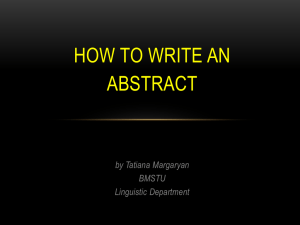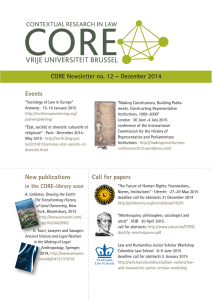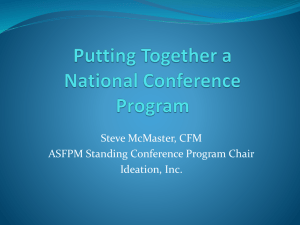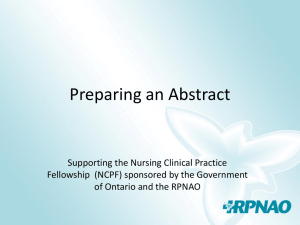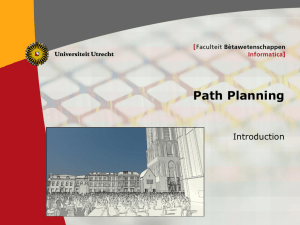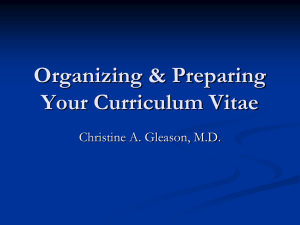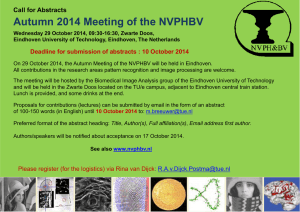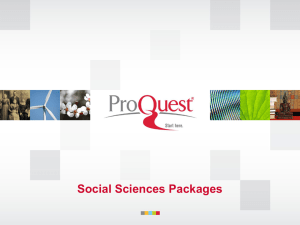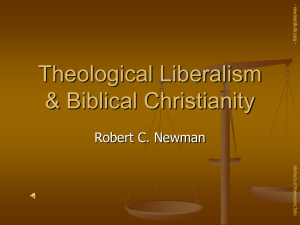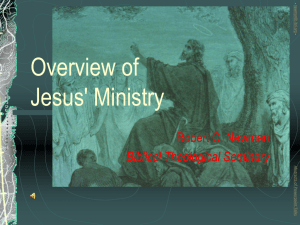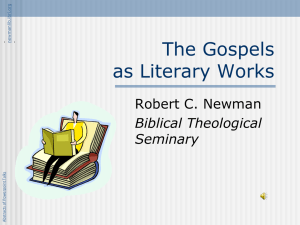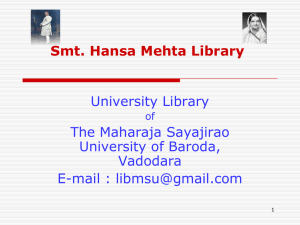PPT Presentation - Graduate School
advertisement
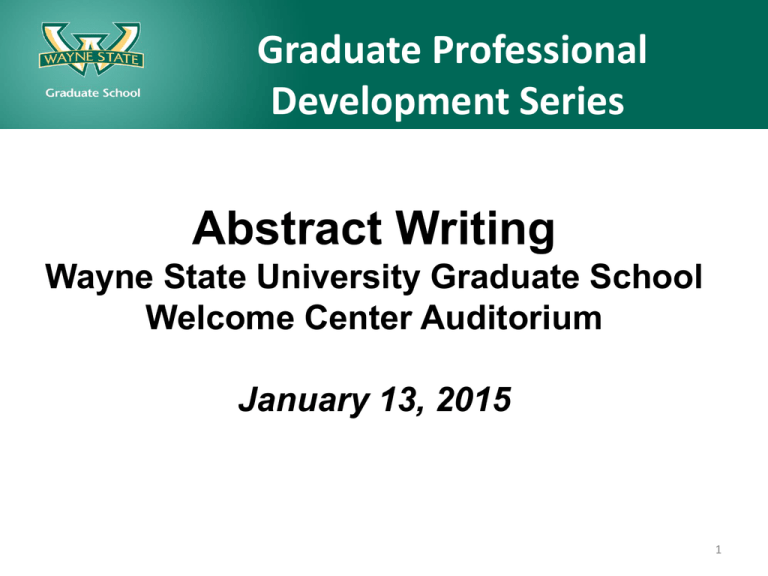
Graduate Professional Development Series Abstract Writing Wayne State University Graduate School Welcome Center Auditorium January 13, 2015 1 Overview of session Introduction to writing abstracts (20 minutes) Sara Tipton, English Language Institute Focus on discipline-specific abstracts (60 minutes) Christine Chow (Chemistry, CLAS), Physical and Life Sciences Heidi Kenaga (Graduate School), Social Sciences and Humanities 2 Introduction to Writing Abstracts • Four functions of abstracts and relation to the reader • Variety in length and structure of abstracts • Types of abstracts • Titles of abstracts • Keywords • Activity • Handout: References, campus resources, future events 3 Four Functions of Abstracts 1. Screening • routing for a proposal or a conference • deciding whether to read or not 2. Summarizing • providing reader with capsule version, mini-article 3. Previewing • organizational ‘road map’ • immediate overview of article for reader/reviewer 4. Indexing • available electronically for referencing • basis of keyword searches (Swales & Feak, 2009) 4 Variety in Abstracts 1. Length varies depending on venue • 150-200 words for traditional abstracts; 250 for Grad Exhibition • 350 words for dissertations • Up to 500 for conference paper proposal; 50 for conference program 2. Components vary depending on venue • Subtitles, references, or abbreviations may or may not be allowed 3. Tense may be past or present • trend toward present tense (Swales & Feak, 2004) 5 Types of Abstracts 1. Summary format • Set of sentences that each fulfill five rhetorical moves in conventionalized way; not divided by subheadings 2. Structured format • Built around subheadings for specific areas • IMRAD (Introduction, Methods, Results, Analysis and Discussion) (Holt, 2004; Swales & Feak, 2009) 6 Summary Format Each sentence fulfills a role: 1. Start with background, standard practice, real-world phenomenon, or problem statement 2. State the present research and purpose of study 3. Give brief statement of methods/materials/subjects/ procedures, without details 4. Give main results/findings 5. Give meaningful statement that discusses implications or states why the work is meaningful or significant; leave with strong conclusion (Holt, 2004; Swales & Feak, 2009) 7 Structured Format Built around subheadings for specific areas: • Background/aim/method/results/conclusions • IMRAD (Introduction, Methods, Results, Analysis and Discussion) This format can be easier to read and is conventional in some disciplines (e.g., sciences) (adapted from Swales & Feak, 2009) 8 Titles of Abstracts • First thing a reader sees • Often used to route the abstract • Usually limited by number of words or characters • Structure and punctuation determined by the conventions in your field → A colon ( : ) may be the norm EX “The English Language and the Medical Profession: Instructing and Assessing the Communication Skills of International Physicians” → Question, phrase, or complete sentence EX “How Much Should We Know About Genetics?” “Winning Partnerships: K-12 Collaborations in Ohio” (Swales & Feak, 2009) 9 Keywords 1. Many research journals will ask for 4-10 keywords in addition to your abstract; these are used for efficient indexing, searching, and retrieval of the article 2. The keywords should be derived from the abstract text and also directly related to the theme of the conference or journal area, rather than being vague or too general 3. Some journals require that the keywords be different from words used in the title; such words embedded in the abstract provide an important path to your article for researchers who would not find your work on the basis of the title alone 10 Suggested Activity • Assemble 13-15 abstracts from a variety of recent journals in your field of study • Find patterns among this set by answering the following questions for each abstract: Is a summary or structured format used? What is the average number of words and sentences? What is the role of each sentence? Are references and abbreviations used? What verb tense is generally used? What is the format and length of the title? Are keywords offered? How many? 11 References, campus resources, future events References and online resources - Handout Campus resources: Writing, Research, and Technology (WRT) Zone - UGL/Adamany Library, 2nd floor Future events: Abstracts Deadline: January 9, 2015 Poster Presentation session: January 27, 2015 6th Graduate Exhibition: March 2, 2015 12 Focus on DisciplineSpecific Abstracts resources, future events Christine Chow, Physical and Life Sciences Heidi Kenaga, Social Sciences and Humanities Small group activity 13 Abstracts in the Sciences • Abstract serves as an outline and summary of the research • Know your audience (nonspecialists vs. specialists, or both; i.e., abstracts of research papers vs. review articles will differ) • Conference abstract: informative summary of work to be presented in a talk or poster • Conference abstract: may be used for organization purposes (e.g., placement in scientific sessions) • Don't include information that is not in the paper or presentation, or work that hasn't been done yet 14 Abstracts in the Sciences • Scientific abstracts may include figures and references, but not always (follow the instructions of the conference or journal) • Avoid using structures, symbols, and equations, if possible; they are hard to search in databases • Use meaningful nomenclature; avoid jargon, slang, abbreviations • Omit details of experimental procedures (e.g., uracil [50 mg] was placed in a round-bottom flask and solvent was added) • Tell what you did, not what you could do; avoid telling people what you will say (e.g., a reaction mechanism will be presented) 15 Abstracts in the Sciences • The abstract should be a subset of the article or presentation; it must include the important elements and follow the same logic as the paper or presentation • Avoid giving away the “punch line” in the abstract; give the audience a reason to read the paper or come to the presentation • Ask for advice to be sure that you have reached your audience; be able to accept criticism 16 Abstracts in the Sciences: Examples Chem. Commun. 2012, 48(22), 2761. 1 sentence; 49 words The Crystal Structure of L-Arginine Emilie Courvoisier, Philip Andrew Williams, Gin Keat Lim, Colan E Hughes and Kenneth D M Harris We report the crystal structure of L-arginine, one of the last remaining natural amino acids for which the crystal structure has never been determined; structure determination was carried out directly from powder X-ray diffraction (XRD) data, exploiting the direct-space genetic algorithm technique for structure solution followed by Rietveld refinement. 17 Science 2011, 334(6062), 1518. 107 words Detecting Novel Associations in Large Data Sets David N. Reshef, Yakir A. Reshef, Hilary K. Finucane, Sharon R. Grossman, Gilean McVean, Peter J. Turnbaugh, Eric S. Lander, Michael Mitzenmacher, Pardis C. Sabeti Identifying interesting relationships between pairs of variables in large data sets is increasingly important. Here, we present a measure of dependence for two-variable relationships: the maximal information coefficient (MIC). MIC captures a wide range of associations both functional and not, and for functional relationships provides a score that roughly equals the coefficient of determination (R2) of the data relative to the regression function. MIC belongs to a larger class of maximal information-based nonparametric exploration (MINE) statistics for identifying and classifying relationships. We apply MIC and MINE to data sets in global health, gene expression, major-league baseball, and the human gut microbiota and identify known and novel relationships. The FASEB J. 2011, 25(12), 4111. 151 words Obesity short-circuits stemness gene network in human adipose multipotent stem cells Mar Roldan, Manuel Macias-Gonzalez, Regina Garcia Francisco J. Tinahones and Miguel Martin The discovery of adipose multipotent stem cells has provided new insights to explore cellular mechanisms involved in adipose tissue function. In the present work, we aimed to evaluate how the adipogenic environment influences the stemness of the resident multipotent stem cells. To achieve this goal, human omental multipotent stem cells (hO-MSCs) were isolated, expanded, and characterized in both healthy lean and morbidly obese individuals. We observed decreased cell proliferation, premature senescence, and increased cytokine secretion associated with increasing body mass index of the patients. Consistent with the latter finding, the hO-MSCs derived from patients with morbid obesity lose their multilineage differentiation capacity associated with a dysregulation in the Wnt, Notch, and Sonic Hedgehog signaling pathways. Moreover, microRNAs involved in the regulation of stemness, cell differentiation, and senescence were also up-regulated in obese individuals. Altogether, our data show that obesity causes a general short circuit in the stemness gene network of hO-MSCs. Virology 2014 Oct [Epub ahead of print] 149 words Cell entry by a novel European filovirus requires host endosomal cysteine proteases and Niemann-Pick C1 Ng M, Ndungo E, Jangra RK, Cai Y, Postnikova E, Radoshitzky SR, Dye JM, Ramírez de Arellano E, Negredo A, Palacios G, Kuhn JH, Chandran K. Lloviu virus (LLOV), a phylogenetically divergent filovirus, is the proposed etiologic agent of die-offs of Schreiber's long-fingered bats (Miniopterus schreibersii) in western Europe. Studies of LLOV remain limited because the infectious agent has not yet been isolated. Here, we generated a recombinant vesicular stomatitis virus expressing the LLOV spike glycoprotein (GP) and used it to show that LLOV GP resembles other filovirus GP proteins in structure and function. LLOV GP must be cleaved by endosomal cysteine proteases during entry, but is much more proteasesensitive than EBOV GP. The EBOV/MARV receptor, Niemann-Pick C1 (NPC1), is also required for LLOV entry, and its second luminal domain is recognized with high affinity by a cleaved form of LLOV GP, suggesting that receptor binding would not impose a barrier to LLOV infection of humans and non-human primates. The use of NPC1 as an intracellular entry receptor may be a universal property of filoviruses. Abstracts in the Social Sciences: Basic Ingredients • State why you embarked on the project—often in response to a gap in the literature or a persistent problem or debate in the field • State what your project/study was about, the topic of the article • State how you carried out your research, your methodology • State what you found in your research, your findings • State what conclusions you draw from the project, implications for the field (Belcher, 2009) 21 Abstracts in the Humanities: Basic Ingredients • Context: information on the historical period, the geographic region, the social conditions within which the work was created • Subject: the literary or artistic works being discussed, their creators and dates • Claim for significance: announcement about the uniqueness of the subject or the approach taken to it • Theoretical framework: often more suggested than stated, the theory you are drawing upon • Evidence: support for argument (such as text quotations) • Argument: what your analysis of the subject reveals about the subject, current approaches to the subject, or society (Belcher, 2009) 22 Abstracts in the Humanities • Used to be less common than in social sciences and physical sciences but electronic indexing and databasing has altered this • Ordering of components less discernible than in social science/ physical science abstracts • First person and active voice are acceptable • Writing tends to be more “literary,” with greater attention to style and aesthetic qualities of the prose 23
